A New York Times Service story credited Richard Hollingshead Jr., of Camden N.J., with opening the world’s first drive-in movie theater in 1933. I beg to differ. Ten years earlier, as a sprout of eleven, I was attending weekly movies at a drive-in theater in the all-but-deserted village of Dakota, which overlooks the Mecan River, one of a splendid network of small trout streams that meander through Wisconsin’s Waushara County.
The drive-in theater was the brainchild of the proprietor of the country store, who painted the side of that tiny pavilion a shining white. The film projector stood on top of a dray wagon so that its beam might clear the crowd, but there was no music unless you counted the sound of the rippling river, the chorus of meadow frogs and crickets, the whisper of poplar leaves, an owl’s inquiry or a whip-poor-will’s complaint.
During intermission, it did not seem incongruous to see a man slip away to fish in the little rapids that rippled below the Mecan River bridge. And often as not, before the movie started again, he would be back with a German brown trout resting on ferns in the creel slung across his shoulder.
So take it from me, Mr. Hollingshead, yours was not the first drive-in theater. And take it from me, drive-in theater proprietors around the world, no matter the popularity of your promotion, none of you will ever match the frog and cricket orchestra of the drive-in I remember, or offer wild trout fishing as a diversion during intermission.
That’s a condensed and slightly abridged version of “Drive-ins,” one of the lively, sharply observed seasonal vignettes that comprise The Land, Always The Land by Mel Ellis. A popular and prolific writer who penned some 20 books, hundreds of magazine articles, and thousands of newspaper columns, Ellis had legions of fans from coast-to-coast—but in his home state of Wisconsin he was revered. “A poet of the land,” he was called, and to the thousands of readers who looked forward to his weekly nature column in the Milwaukee Journal, “Notes from Little Lakes,” he wasn’t Mel Ellis. He was simply Mel, as in “Did you read Mel’s column on Sunday?”
His essays had such a warm, welcoming quality to them that, as his celebrity increased, perfect strangers would occasionally stop by his home west of Milwaukee in the hopes of meeting him in person. On these occasions he’d slip out a back door, row to the middle of one of the several ponds (the “Little Lakes”) on his property, and wait for them to leave. Despite Ellis’s highly public persona, he was an intensely private man who cherished solitude and had little want, or need, of social intercourse beyond his family and a few close friends. When those uninvited visitors asked about “the man in the boat,” Ellis’s wife, or one of his daughters, would reply “Oh, that’s just an old man we allow to fish here.”
But here’s the thing: Before he became a nature essayist in the mold of Rachel Carson, Loren Eiseley and, in particular, Aldo Leopold (who he credited as one of his foremost influences and inspirations), Ellis was an outdoor writer. Meaning, a guy who hunted and fished, and subsequently wrote about those experiences. From 1948 to 1963 he covered the outdoors full-time for the Journal, where for the first eight years of that tenure one of his colleagues, already something of a legend, was Gordon MacQuarrie.
If ever there was a newspaper with two heavier hitters on the outdoors desk at the same time, it’s news to me. As someone quipped (referencing the two incandescent Milwaukee Braves sluggers of the period), “Having Mel Ellis and Gordon MacQuarrie writing about the outdoors for the same newspaper was like having Henry Aaron and Eddie Mathews in the same batting order.”
In the words of Ellis’s daughter Mary Ellis-Stigler, “They’d tell Dad he had to go to this lake, catch a fish this big, and that he had this much time to do it. And he would.”
Ellis also contributed to various national outdoor publications, notably Field & Stream. In recognition of the uncommonly high quality of his work, F&S added his name to its masthead as an Associate Editor in 1958. I have an oddly clear memory of reading an Ellis story called “Where Grayling Gang,” about fishing on Hatchet Lake in northern Saskatchewan, that appeared in F&S sometime in the the late-60s. This memory includes a photo of Ellis, who had a distinctively aquiline profile and a hairline reminiscent of Richard Nixon’s, standing on the rocky bank of a rushing boreal stream, his fly rod bent double by the pull of a scrappy Arctic grayling. He may have been smoking a pipe, too—many photos of him do—but I can’t swear to that.
Born in 1912, Mel Ellis grew up on a farm in Dodge County, Wisconsin, where he had the kind of Huck Finn boyhood it doesn’t seem possible to have any more. His father, a skilled and avid outdoorsman who supplemented his income by trapping, taught him to hunt and fish; the Rock River ran through a portion of the farm, and young Mel became so proficient at catching bullheads out of it that he developed a route of regular “bullhead customers,” including the Northwestern Hotel in the nearby city of Juneau.
He harvested clams out of the Rock as well, shucking them by the hundreds in search of the few that held pearls—a skill he learned from a camp of itinerant clammers who squatted for a time on the family land. Half-a-century later, in a poignant coming-of-age story called “Pearl Diver,” he wrote of it as “an unfinished piece of business which has been smoldering like gold fever since the day, as a sun-dried crisp of a boy, my questing thumb felt through a mess of clam meat and juice, touched the first hard nubbin of pearl, and turned it to the light.”
In those days, too, he and his father, after taking the train as far as Oshkosh, would hire a horse-drawn rig to carry them west to the trout streams of the Wisconsin Sand Country—the setting of the events described in “Drive-ins.” In another story set in that same part of the state, “Those Special Trout,” Ellis recalled that he “fished more than a score of streams all within a twenty-mile radius of one another, and successfully resisted growing up by spending weeks immersing myself in an orgy of fishing.”
Gently quashing his mother’s plans for him to pursue a career as a concert violinist, Ellis enrolled at the University of Notre Dame to study journalism. He graduated in 1933; then, as so many young men did in those Depression years, he hoboed around the country, riding the rails and taking whatever jobs he could find. He worked as a stevedore, a short-order cook, a dishwasher, and a garbage collector before starting his writing career at newspapers in Sheboygan, Wisconsin, and Rockford, Illinois.
When the United States entered World War II, Ellis fudged his age, claiming to be 29 when he was actually 30, in order to land the assignment he wanted: serving with the U.S. Army Air Corps in Europe. The radio operator and waist gunner on a B-17 Flying Fortress that saw heavy action over Nazi Germany, he was awarded the Distinguished Flying Cross, five Air Medals, and the Legion of Merit.
The Greatest Generation, indeed.
In 1948, Ellis hired on with the Milwaukee Journal. It was the Golden Age of outdoor writing, when every big-city daily had at least one full-time outdoor writer on staff along with the budget to bankroll extended travel in search of fish, game, and stories. It was hard but satisfying work, work that took him from Mexico to the Arctic Circle and frequently necessitated long periods of separation from his family, and Ellis excelled at it. His writing had an unmistakably poetic quality, and an eye for the telling detail, that raised it far above the common run of outdoor writing. It conveyed a powerful sense of landscape, too, both the exterior landscape in which the “action” takes place and the interior, emotional landscape of the sportsman as he engages with it.
In the estimation of a fellow writer and contemporary of Ellis’s who admired the hell out of him, “He did what he did better than anyone else ever did.” This same man also remarked that at his best Ellis’s words “came out pure and beautiful, and you could not change them in any way to make them better.”
But Ellis wasn’t merely gifted. He was ferociously disciplined, too. According to his daughter Mary, it was not uncommon for him to be writing at four in the morning. He’d stop at eight or so to eat breakfast and read the mail, then he’d hit it again, hard, until lunchtime. After lunch and a nap, he’d type up what he’d written in the morning before turning his attention to answering letters and other correspondence.

“He wouldn’t allow himself to take a break,” Mary recalled, “even if he was just staring at a blank page. And we kids learned he was not to be disturbed. When Dad was working, we walked on tiptoes.”
No wonder he headed for his rowboat when unexpected company showed up.
In 1963 Ellis gave his notice to the Journal and, forsaking the security of a regular paycheck, embarked on a second career as a freelance writer. His wife, Bernice, had died of cancer in 1962, leaving him to raise their four daughters, the youngest of whom was only three at the time. Happily, a fan letter from a young widow named Gwen Krebs blossomed into a romance; they married in 1964, and Gwen added her own 11-year-old daughter to the Little Lakes mix. In his column Ellis referred to his daughters as “The Rebels,” while his wives, first Bernice and then Gwen, were “The Rebel Queens.”
Sometime in 1967, with the carrot of a cash prize for a literary competition dangling but with the deadline coming up fast, Ellis sat down at his desk and, drawing on all that talent and discipline, set out to do something he’d never done before: write a book. Two weeks later—two weeks!—it was finished. A memoir of the grandly enigmatic German shorthaired pointer who literally came back from the dead to become the greatest hunting dog Ellis ever had, the book was called Run, Rainey, Run. Many, including yours truly, consider it his masterpiece, an argument not hard to make in light of writing like this:
If he was loyal to me, if he worked hard for me, if he forsook all others to hunt in my interests, I am inclined to believe it was because he had been conditioned to understand I was the open sesame to his every Eden.
Somehow, true or not, he believed that without me he could never come to the glades when the fading moon is still laying sparkles on the frost and the ruffed grouse perfume is hot and heavy in hazel brush …
Alone, I had to assume, he believed he would be only an animal forced to languish behind wire—a caged beast. But with me he could sweep through the golden grass like a high-headed, wind-swift, winged hunter and take the thin scent line straight and true to the huddling quail.
Rainey sold well—it was a different world in those days—and on the heels of its success Ellis began directing more and more of his energies to book writing, mostly nature-themed adventure yarns in the “Young Adult” category. Ironically, of the 20 books he ultimately authored (two of which were published posthumously), Rainey is the only one that deals meaningfully with hunting. By then Ellis had been drifting away from “traditional” outdoor writing for a while; I suspect he’d simply grown tired of the genre, and felt, too, that he’d exhausted its possibilities. When he was dismissed by Field & Stream on the grounds that his heroic portrayal of the Canada goose at the center of his 1969 book Wild Goose, Brother Goose was incompatible with the magazine’s editorial values—not F&S’s finest hour, to be sure—it marked the de facto end of his career as an outdoor writer.
He didn’t stop hunting and fishing, he just stopped writing about it. And when he did hunt or fish, he did it close-to-home. Reflecting late in life on the fact that he could now enjoy the shade of trees he’d planted at Little Lakes as saplings, he remarked to a friend, “I know how lucky I am.”
Mel Ellis died in 1984 at the age of 72. For some time following his death, people who’d known him would distantly glimpse a man with a familiar profile in the woods or on the water, catch a faint whiff of pipe smoke, and swear that it was Mel.





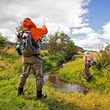
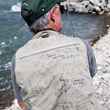




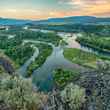
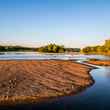


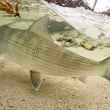



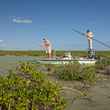





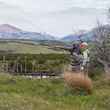

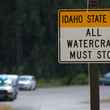
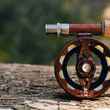
Comments
Kerry replied on Permalink
Fantastic story!!!! Thanks!!!!
Robbins Church replied on Permalink
Fabulous. Thanks for this!!
Saltmarsh replied on Permalink
Great article - well done!
Pages